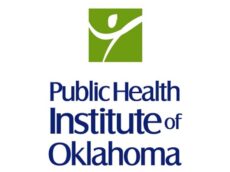CATCH-UP 2.0
Addressing Health Disparities
Leveraging their successful COVID-19 community engagement efforts, the Public Health Institute of Oklahoma (PHIO) expanded its CATCH-UP 1.0 Oklahoma Project. This community-designed effort links public health, academia, community change agents, and individuals living in under-resourced areas to local response and recovery efforts. The CATCH-UP 1.0 consisted of a network of nearly 50 diverse partners across the state with the capacity to organize local health and socially focused activities targeted to populations experiencing health disparities and inequities, both as a result of COVID-19 and historically. In 2021, CATCH-UP 1.0 partners hosted over 400 community-designed response and relief events in marginalized and vulnerable communities.
CATCH-UP 2.0 focused on expanding the network development of 10 existing partners, who collectively serve over 40 unique urban and rural Oklahoma Counties. PHIO served as the coordinating hub of CATCH-UP 2.0 as partners sought to enhance the network through co-designing, delivery, and exploring relationship-based quality health improvement strategies while increasing sustainability pathways. Based on community health priorities, PHIO connected local partners with a menu of complementing interagency efforts to enhance partnerships, collaboration, and local infrastructure.
Menu includes support and/or connection to hope/trauma trainings, peer support groups, parent partnership advisory committees, Handle With Care, family resource/HOPE centers, Oklahoma Turning Point Council, Self-Healing Communities, Community/County Health Improvement Organization Certification, resource and referral platforms, community health workers, and the Parent Partnership Learning Community.
Counties identified for enhanced services under CATCH-UP 2.0 included: Oklahoma, Latimer, Le Flore, Stephens, Jefferson, Grant, Garfield, Alfalfa, Texas, Cimarron, Beaver, Cherokee, Delaware, Rogers, and Wagoner, which each include census tracts identified by OSDH as Inequity Hot Spots.
Highlights of CATCH-UP 2.0 include:
– Families: highlighted community voice and families with lived experience, removed barriers for participation, especially among populations experiencing health disparities; contracted with Community Advisors to co-design outreach and community engagement to build trust and provide meaningful connections within inequity hot spots; created action plans to increase community coordination that advances family-centeredness, equity, collaboration, and transparency. Developed a quality health improvement mechanism that allows funding to remove barriers for participation while honoring the feedback, time and talent of community members. Promoted peer support groups and parent partnership advisory committee to enhance family stability and advance leadership skills among populations experiencing health disparities.
– Organizational: increased interagency collaboration and enhanced partnerships between law enforcement and schools to advance Handle With Care Oklahoma which connects children to supports, as needed, after a traumatic event. Reduces suspensions and expulsions. Improves positive school culture, attendance, academic performance, and community coordination. Provides an early intervention strategy before the family falls apart and creates a positive trajectory with coordinated supports and resources.
– Community: highlighted community coalition work to facilitate interagency partnership agreements, accountability, and sustainability of relationship-based strategies (especially Handle With Care, peer support groups, and Parent Partnership Advisory Committees (PPACs). Invested in Regional Coordinators to enhance local leadership capacity to move the work forward with community partners.
– Policy: presentations at the Capitol with families of lived experience, Advocacy Day to increase positive engagement with legislators, increased shared values and common policy priorities with community partners. Promoted bipartisanship, collaboration, lessons learned, and opportunities to align efforts to address health disparities. Aligned with statewide efforts for Statewide Health Equity Plan, Achieving a Healthy Oklahoma, Resilient Oklahoma, Self-Healing Communities, Thriving Families, Safer Children, Children’s State Advisory Workgroup, and State Advisory Team.
- CATCH-UP 2.0 Partner Highlights









